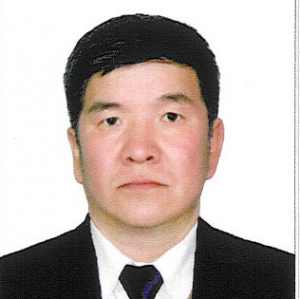Энэ 7 хоногт
Filmmaker of ’Babies’ discusses making the movie
Thomas Balmes is a French documentary filmmaker who has made a few little-seen works of cultural anthropology – the conversion of Papua New Guinea natives to Christianity, Finns seeing how their outsourced cellphones are manufactured in China.

Thomas Balmes is a French documentary filmmaker who has made a few little-seen works of cultural anthropology – the conversion of Papua New Guinea natives to Christianity, Finns seeing how their outsourced cellphones are manufactured in China.
Then, five years ago, a friend hit him with a big idea. "He said, 'Why not do a wildlife documentary on babies?' " Balmes recalls. "No narration, just observing, being with babies on their level. I realized we could shift the perspective from us looking at the world from our point of view, to seeing it from the babies' point of view – how they see their world."
He didn't end up with just a documentary capturing babies in their natural habitat. We've got America's Funniest Home Videos for that. What Balmes discovered was the different ways various cultures coddle their kids, from First World (San Francisco and Tokyo) to Third World (Mongolia and Namibia).
Babies, his documentary of four countries and four babies, opened Friday. Explaining the film's potential to strike a chord with recession-fearing moviegoers, The Hollywood Reporter's Paul Bond wrote, "What's more comforting than cuddly babies?"
We reached Balmes in New York for his insights.
How did you pick your countries and the babies you show in the film?
"I've shot in a lot of these places. Mongolia is so cinematic, Namibia so basic. There is something universal in the American way of raising children. What you do here today, we'll be doing in the rest of the world tomorrow.
"Japan is also to me a prediction of how we'll be living and raising children in 50 years, all over the world. That Blade Runner atmosphere where everything is so crowded, noisy, not a minute's peace.
"I wanted to go from people who have zero relationship to technology, Namibia, to Mongolia, where nomadic people have some involvement with technology. The baby steps out the door of the tent, and he is in the wild. And from there to San Francisco and onward to Japan."
Were there times you had to come out from behind the camera to save a baby from danger?
"You mean like when the Mongolian baby wanders into the herd of cows? Oh, you didn't see everything. Not the worst things we saw.
"When you're observing, you're not interfering. The parents never considered me a nanny with a camera.
"So the Mongolian baby is crawling in the middle of a herd of cows! He was safe, though, and it was cool. Is it cruel to let the child in Japan cry and cry? That is what babies do.
"The rule is, let it go, unless something really dangerous was about to happen. I'm a father. I will stop the camera."
What were the universal truths of child-rearing that came to you as you edited all this footage about these babies together?
"In the modern parts of the world, we have tools – books and technology – to help raise kids.
"But as the film shows, a child in Mongolia can spend hours just watching the sky or a fly or the cat. He's the happiest child I have ever seen. ... These babies were all loved by their families, loved in different ways. A loved baby has all the advantages, no matter where it grows up."
Roger Moore,
Orlando Sentinel






